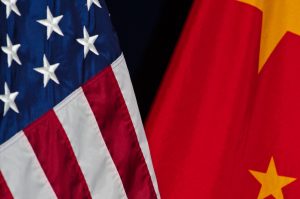Yes, the US-China trade war is still happening. Donald Trump began his presidency by investigating unfair trade practices in China, and then slapping 25 percent tariffs on the Asian nation. Four years later, those tariffs remain. Even after the Phase One trade deal (meant to be the first in a series of deals) was signed in January 2020, U.S. tariffs on Chinese products remained in place. When the COVID-19 pandemic hit, the trade war faded into the background, used only to highlight China’s inability to meet the conditions of the deal to purchase an additional $200 billion in American products over the 2017 level through 2021 due to the disruption from the pandemic. The trade war continues to ravage the U.S. economy even under the new Biden administration.
The Biden administration has not made changes to tariff structures and is said to be examining the Phase One trade deal. Wang Yi, the Chinese foreign minister, recently asked President Joe Biden to restart talks with China to remove tariffs and sanctions. Wang pointed out that the United States has greatly diminished bilateral talks at all levels.
While talks to discuss the trade war have yet to materialize, at the end of February, Biden signed an executive order to analyze global supply chains in four industries that were strongly affected by the pandemic. These include computer chips, large-capacity electric vehicle batteries, pharmaceuticals, and critical minerals in electronics. The semiconductor industry faced serious bottlenecks at the outset of the global pandemic, when Chinese factories were in lockdown. These industries were also hit by the U.S.-China trade war, and the two external shocks led many C-suite executives to reassess their firms’ global supply chain resilience.
Biden’s new supply chain strategy will require 100-day reviews for producers and distributors in these critical industries, and a year-long review of supply chains in six broader industries. The main purpose of the reviews is to understand to what extent the industries are at risk, and eventually to induce industries at risk to move suppliers out of risky circumstances or locations. How the Biden administration will change supply chain structures is unclear. (For its part, China has noted that the semiconductor industry requires global cooperation for healthy growth, but that it would also like to increase self-sufficiency in competitive technologies.)
The results of the supply chain review can be used to enter into conversations with China regarding existing supply chains. However, U.S. trade officials have not asserted that this will be used as a jumping off point to review the conditions of the trade war. Until the trade war is resolved, losses from higher costs will continue to mount. High U.S. tariffs remain on $370 billion of products imported from China. These cover a wide range of goods, from machinery parts to seafood.
The ongoing trade war is costly and should be addressed now. The issues that were to be addressed throughout the trade war go beyond an exploration of supply chains. They cover the material in the Phase One agreement, including intellectual property rights, technology transfer, and expansion of trade purchases, as well as a general adversarial approach to U.S.-China trade that views a trade surplus between the two countries as unfair to the United States. Time should be taken to carefully address these issues through a series of meetings between the U.S. and China.
The Biden administration has expressed a wish to discuss U.S.-China trade issues with its allies first. It is critical that they do this immediately so that relations between the United States and China can be repaired. The implication of the U.S. government’s prioritization of supply chain review is that Washington wishes to secure its supply chains to reduce reliance on China and to increase competitiveness with China in manufacturing of goods like semiconductors. Even so, the United States should not waste time in engaging with China to reinforce what has been, in the past, a mutually beneficial relationship.
The necessity for immediate engagement with China is especially important if aspects of China’s technology regime are viewed as “techno- authoritarianism.” As the United States prepares a review and legislation that would ultimately strive to bring chip manufacturing back home and to invest more in technology, the focus in U.S. talks with China should be on ways that the two countries can cooperate and reduce the worst effects of the trade war.
































